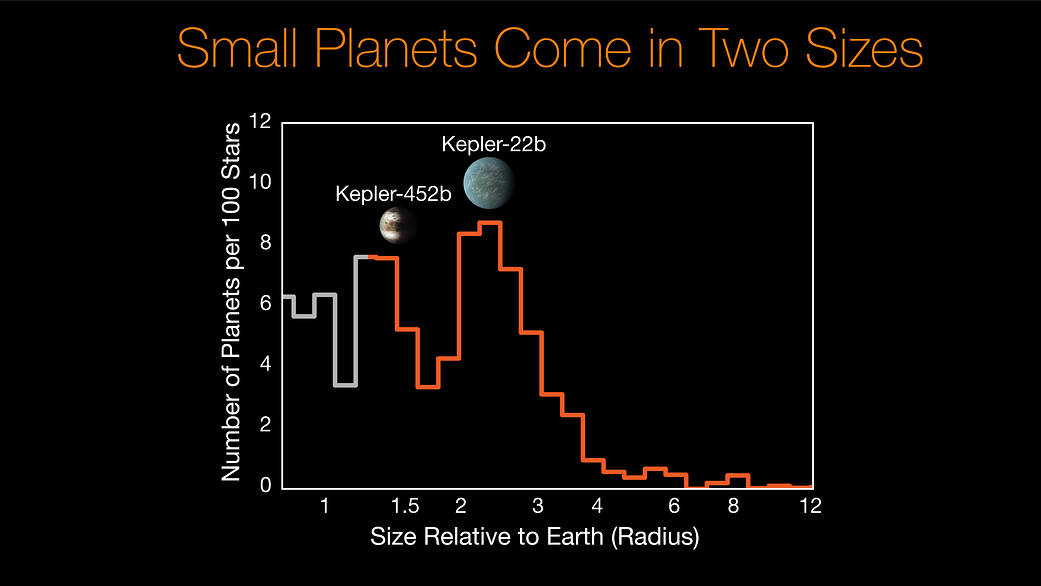
Researchers using data from the W. M. Keck Observatory and NASA's Kepler mission have discovered a gap in the distribution of planet sizes, indicating that most planets discovered by Kepler so far fall into two distinct size classes: the rocky Earth-size and super-Earth-size (similar to Kepler-452b), and the mini-Neptune-size (similar to Kepler-22b
Researchers using data from the W. M. Keck Observatory and NASA’s Kepler mission have discovered a gap in the distribution of planet sizes, indicating that most planets discovered by Kepler so far fall into two distinct size classes: the rocky Earth-size and super-Earth-size (similar to Kepler-452b), and the mini-Neptune-size (similar to Kepler-22b). This histogram shows the number of planets per 100 stars as a function of planet size relative to Earth.
Image credit: NASA/Ames Research Center/CalTech/University of Hawaii/B.J. Fulton























